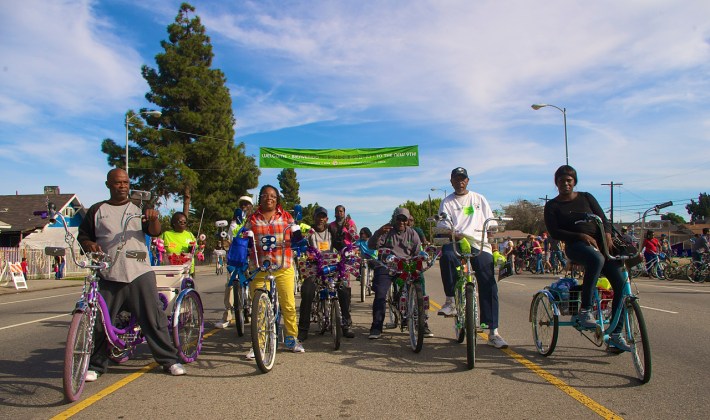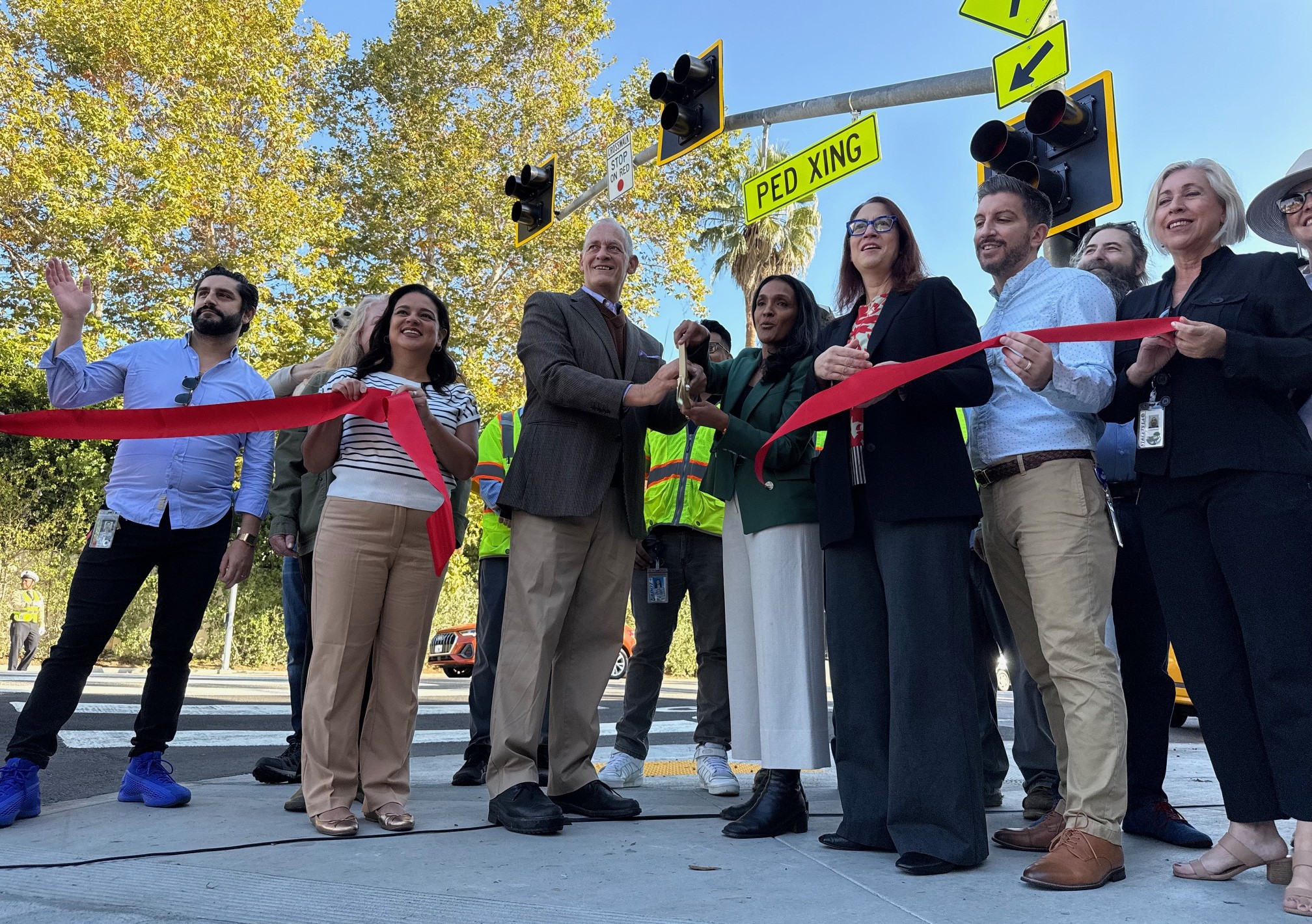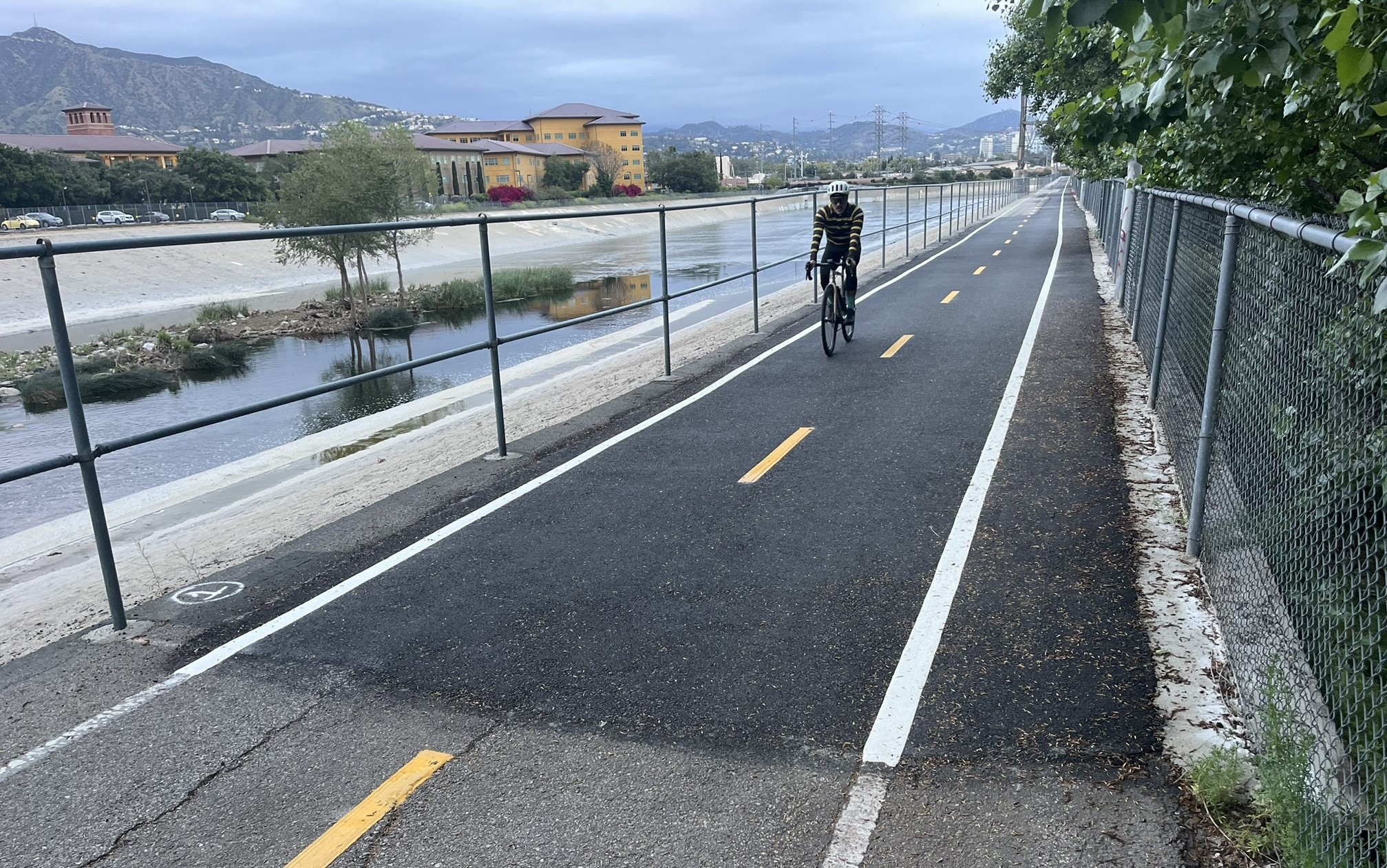What will the future streets of Los Angeles look like? And what sorts of innovations, interventions, infrastructure, interconnections, and events will help us get there? And can we get there in a way that is sustainable, grounded in community experiences, and does not displace residents of communities that have experienced historical disinvestment?
Digital artist, filmmaker, and Ph.D. candidate at USC's School of Cinematic Arts Karl Baumann raises many of these questions using lovely drone footage of CicLAvia: Heart of L.A. and the voices of a handful of younger planners and advocates who ponder a future where "experience [is] driven by two wheels rather than four" and "design [is] driven by real issues of sustainability, livability, and affordability."
"With the passing of LA’s Mobility Plan 2035," Baumann believes, "we’re seeing the bright glimpses of a new paradigm shift for the city. The future of LA will be about local placemaking, pedestrian culture, and sustainability. The emphasis on private cars speeding from one neighborhood to another will become a thing of the past. It’ll become a fading dream of an old utopian impulse, laid out by GM’s 'Futurama' exhibit at the 1939 World’s Fair."
Any paradigm shift, he acknowledges, always comes with a backlash. And L.A.'s experience has been no different. Behind Fix the City's lawsuit and bizarre characterization of bike- and transit-dependent folks as seeking to "steal" lanes from beleaguered drivers and the concerns of more moderate opponents who fear transit will never be able to meet their needs is a common desire to defend and only lightly amend the known evil, Baumann says, rather than "rally around a not-yet-built imagined infrastructure."
Events like CicLAvia, Baumann argues, give us a common point of reference from which to begin to rethink how our city should be designed. Experiencing safe, car-free streets firsthand, he says, can help skeptics imagine a more bike-centric future. Rubbing shoulders with the diverse mix of Angelenos seen at CicLAvia can also help to dispel the myth that cycling is the purview of well-to-do hipsters. And seeing the extent to which cyclists at open streets events outnumber those commuting on a daily basis might make it easier for skeptics to understand the role protective bike infrastructure can play in emboldening those who are currently too afraid to cycle L.A.'s mean streets.
The video focuses on Downtown, Baumann says, because it has become a vital test lab and potential crystal ball for the redesigning of the city. And also because, he adds, the development there also hints at the "dark side of our bright future."

"With increasing livability," he says, "comes displacement and a lack of affordability."
Asking who benefits from infrastructure and how plans can be modified to be inclusive of existing residents and their visions of community may be important as we move forward, he says.
"These will be the most challenging questions moving forward," he concludes.
While neither he nor the advocates featured in the video have answers to those questions, Baumann hopes that raising them in the video will add to the ongoing conversations about what a more people-centric future city might look like.
If videographer Chidi Onyejuruwa's cool drone footage of people riding through downtown offers any clues, that future looks like it could be really fun and harmonious.






